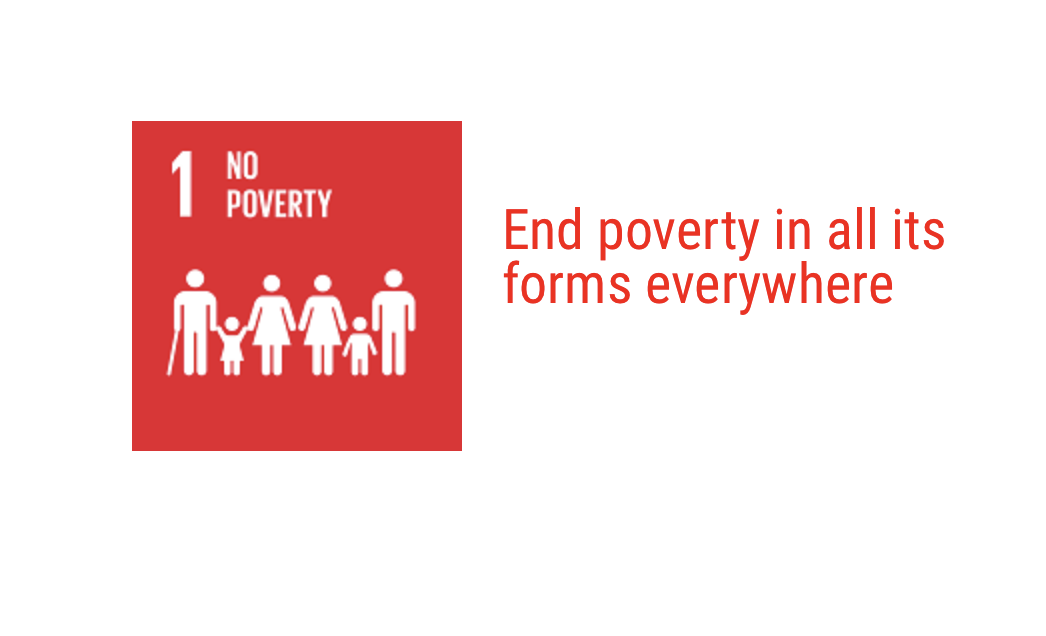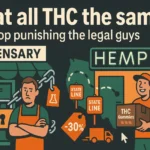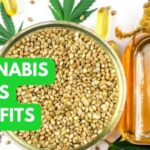
Source
The ‘No Poverty’ goal is a part of the 17 goals set by the UN for a better world.
The goal aims at the following:
Getting rid of extreme poverty.Cutting down poverty by half.Giving everyone equal rights to own things, get basic services, use technology, and have economic resources.
Making sure people can handle bad situations like natural disasters.Gathering resources to make policies that end poverty.Setting up policies that help the poor and consider both men and women.
Now, let’s move to understanding how hemp and poverty alleviation are related.How does hemp help in reducing poverty?Hemp can boost the economy in Asia.
Recommendation:
We should change policies to focus on the people who need help the most. They should be part of the official markets.
This means:Some farmers are already growing cannabis. But they aren’t selling in the official markets.
By changing policies, we can help these farmers. They can then sell hemp legally and earn money.
This will help them come out of poverty.A great example in the US. The Farm Bill:

Source
The 2023 Farm Bill can clear doubts about growing hemp. It can help farmers and make the market stable.In 2018, the US made hemp legal.
They took it off the list of banned drugs. They also told the USDA to set rules for the whole country.To grow hemp, farmers need to get licenses.
Even though hemp is legal, there are strict rules. Both personal use and business use of hemp in the US have to follow these rules.In 2021, the U.S. hemp market was reported to be worth $824 million in 2021. By 2030, the global hemp market is predicted to be worth $17.24 billion.
These positive numbers speak in favor of hemp. Asia can tap into a multi-billion dollar international market. We need to start with good policies.
Policies that support hemp cultivation. This will aid hemp growth and poverty alleviation. Hemp can help more farmers earn in Asia
The recommendation: Avoid barriers to accessing legal markets. These include Licenses, Unaffordable administrative fees, Seed traceability requirements.
Seed traceability refers to the ability to track and verify the origin and quality of hemp seeds used for cultivation.
This means: Hemp can easily grow in infertile lands . It’s easier for farmers to grow it. We should make it easier for people to access legal hemp markets.
We can give everyone a fair chance to get involved in the hemp industry.
A good example of hemp licensing in Canada: Although there is licensing required, it is relatively simple to obtain one.
In Canada, if you want to grow hemp, you need a license from Health Canada.
Health Canada looks after hemp growing in Canada. This helps the hemp business in Canada.
Getting this license is made easy for hemp farmers in Canada.Health Canada helps people get this license.
They give helpful guides like the Cannabis Licensing Application Guide: Cultivation.Hemp chaff, which is the flowers, leaves, and stems, can only be sold to people who have a license.
To get a license, you fill out a form and send it to Health Canada.This form asks about what you plan to do, where you are, how you’ll keep things safe, and how you’ll keep records.
Hemp can help farmers break the cycle of poverty
The recommendation: We need to reduce middlemen and their profits. Farmers should be able to retain their fair share. This will end the cycle of poverty.
This means: To break the cycle of poverty, we need to reduce the influence and profits of middlemen.We need to give power to growers and retailers.
We should decrease the involvement and profit margins of middlemen. More financial benefits should directly reach growers and retailers. This ensures that growers receive a fair share for their efforts.
Online platforms can help us achieve this
Online websites and apps can make this happen.By using these online tools, farmers can talk and sell directly to people who want to buy. Ukhi is a good example.
At Ukhi, we link farmers in India who need help with the right buyers.To make this work, we need to teach farmers how to use computers and the Internet.This way, they can start their own small businesses.
Source
Hemp can help communities and reduce poverty
The recommendation: When making international trade rules, we should think about the people who have been growing Cannabis for a long time.
This means: We should set up a trading system where: Farmers get good money for their hemp.Farmers can easily sell their hemp in different markets.
Farmers have chances to make their hemp products more valuable.
Local businesses can use hemp to make a variety of products, creating more jobs.Training is provided to farmers to improve their hemp farming techniques.
Communities can use the income from hemp to build schools, hospitals, and other important facilities.
By doing all this, we can make these communities stronger. This will also help in reducing poverty and growing the economy.
Initiatives include fair trade principles and certification programs. Here’s what it looks like.
Both the government and businesses need to do the right thing. When moving to legal markets for cannabis and hemp, they should make sure everyone is treated fairly.
In Canada, parts of the hemp plant like the flowers, leaves, and stems can only be sold to people who have a special license. This is according to the Cannabis Act.Having certificates and making sure everyone gets a fair share is very important.
This makes sure that everyone benefits from the hemp business.We should take the UN’s Sustainable Cannabis Policy toolkit very seriously.
And work towards a better trade environment. Hemp can create fair economic opportunities
The recommendation: To make these chances fair, we need to protect ideas and nature. This includes:Protecting new ideas about hemp (intellectual property).
Keeping nature and plant types safe (preservation of natural and genetic resources).
This means: Growing hemp helps in:Protecting new ideas and nature.Starting things like community seed banks and saving knowledge.
Making sure the chances to earn money stay in one place and help the local people. This also keeps nature safe and diverse.
One good example in the hemp industry is the now-dissolved Open Cannabis Project (OCP)

The OCP wanted to make a free-to-use list of different cannabis types.But in May 2019, they had to stop because of problems with another company called Phylos Bioscience.
The OCP’s goal was to make a clear and free list of cannabis details.Recently, people have been getting official rights (patents) for new ways to use cannabis genes and take out cannabinoids.Since 2015, more people have been getting rights for new ways to take out cannabinoids.
Some agreements, like the Convention on Biological Diversity and the Nagoya Protocol, might change the rights people have over medical cannabis.Variety in hemp can get more out of crops
The recommendation: Regulations should include training for growing cannabis and hemp.
These trainings should be part of the farming plans that are already in place locally, nationally, and regionally.
The goal is to teach farmers to grow different types of crops, including hemp. They should get help and support to do this.
This means: Growing hemp helps:Keep different types of plants safe.Keep old farming ways alive.
By adding hemp to farming plans, farmers can grow more types of crops. This keeps nature diverse.
This way, farmers can earn money in a good way, keep their traditions, and reduce poverty.
A historical lesson about the diversification of hemp.
During World War II, there was a campaign called “Hemp for Victory”. It asked farmers to grow hemp to help in the war.The main reason was to make rope for the military.
For a short time, the rules about growing hemp were relaxed so the U.S. Navy could get hemp fiber.
The campaign wanted as much hemp grown as possible. The Smithsonian Institution even helped.
A movie in 1942 called “Hemp for Victory” told people about how hemp can be used and asked for more hemp to be grown.
After the war, hemp had a hard time because of new man-made fabrics.This campaign shows how growing hemp helped keep different types of plants and old farming ways alive.
Hemp can Help Farmers Transition from Illicit to Legal Cannabis
The recommendation:
We should help farmers move from growing illegal cannabis to growing legal cannabis.
This means:
Hemp lets farmers switch from growing illegal cannabis to growing legal hemp. This gives farmers who were doing illegal things a new, legal way to earn money.Growing hemp can help poor people earn more and include communities that are often left out.
A story about how Colorado changed the way they grow cannabis:
Colorado made medical marijuana legal in 2009. This let farmers grow it if they followed the state’s rules.Later on, they also made it legal to grow hemp.
This lets farmers be part of a legal business.Many farmers in Colorado who used to grow illegal cannabis started growing legal hemp.Colorado set up clear rules for growing hemp.
This includes getting a license, checking the hemp, making sure the seeds are good, and using the right kind of sprays.Thanks to a company called Formation Ag Equipment, farmers in Colorado can now grow hemp for less than $2,000 an acre.
Colorado grows a lot of the hemp in the US. They have many fields just for hemp.Even though the 2018 Farm Bill made hemp legal, there are still a lot of rules about growing it in the US. It’s not like growing regular plants like tomatoes.
Colorado’s decision to make hemp legal and set up rules has really helped farmers. They can now grow hemp legally and follow the state’s rules.
Countries in Asia can learn from Colorado. By making hemp legal, we can help poor people earn more.










